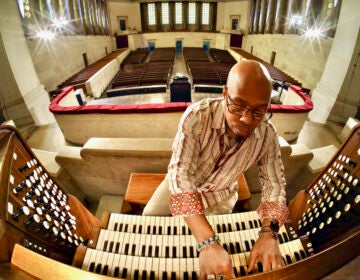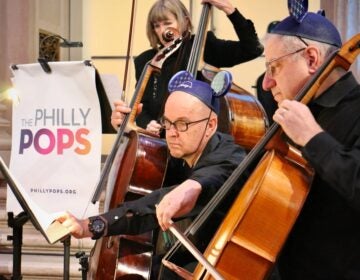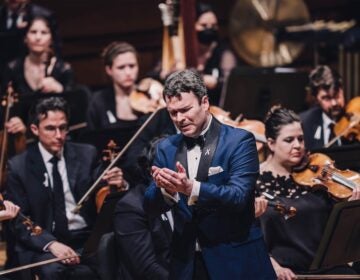Philadelphia Orchestra throws Mozart a curve
The orchestra will give the hometown concert debut of a piano with an ergonomically curved keyboard.
Listen 1:26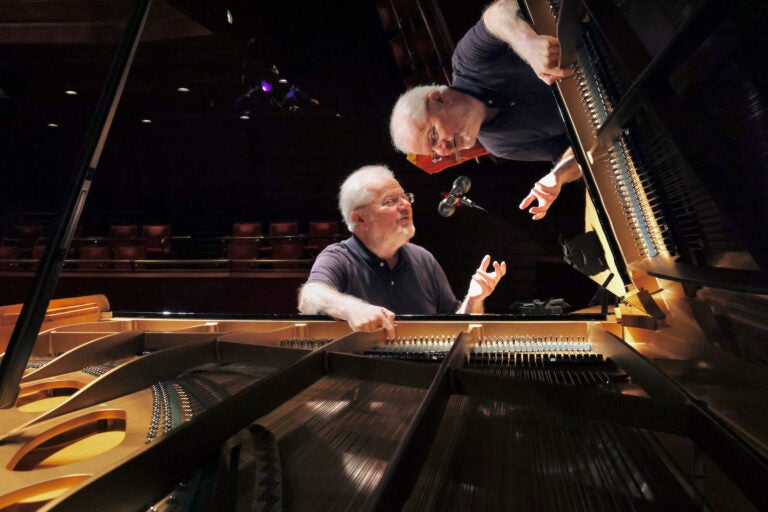
Classical pianist Emanuel Ax is reflected in the lid of a Maene-Viñoly concert grand piano as he describes how it feels to play on the ergonomically curved keyboard. (Emma Lee/WHYY)
From Philly and the Pa. suburbs to South Jersey and Delaware, what would you like WHYY News to cover? Let us know!
People who go to the Kimmel Center this weekend to hear the Philadelphia Orchestra perform Carmina Burana and a Mozart concerto will see something unusual on stage.
The piano is bent.
Mozart’s Piano Concerto No. 25 will be performed on an ergonomically curved keyboard, bringing the keys on the extremes slightly closer to the player.
“I think the motivation for it was probably the idea behind the ergonomic computer keyboard,” said pianist Emanuel Ax. “You place your arms and elbows in a more natural position.”
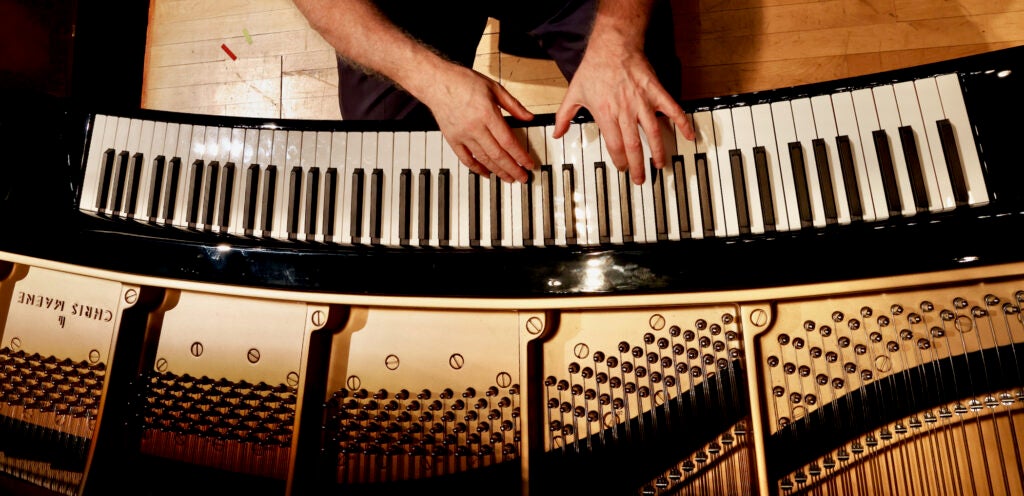
Ax said he never had a problem with the standard straight piano keyboard and does not expect the curve to feel much different.
“I don’t know that it makes things a lot easier,” he said.
The piano is the Maene-Viñoly Concert Grand and only two have ever been made. The other is in Belgium.
It was created by the late architect Rafael Viñoly, who designed the home of the Philadelphia Orchestra, Verizon Hall, which also has distinctive curves. The interior of the hall resembles the body of a violin.
Ax is using this piano in concert as a tribute to his friend.
“I knew Rafael Viñoly quite well. He was a very fine amateur pianist,” he said. “I thought it might be nice to play this piano in this hall. Physically, it does go with the building.”
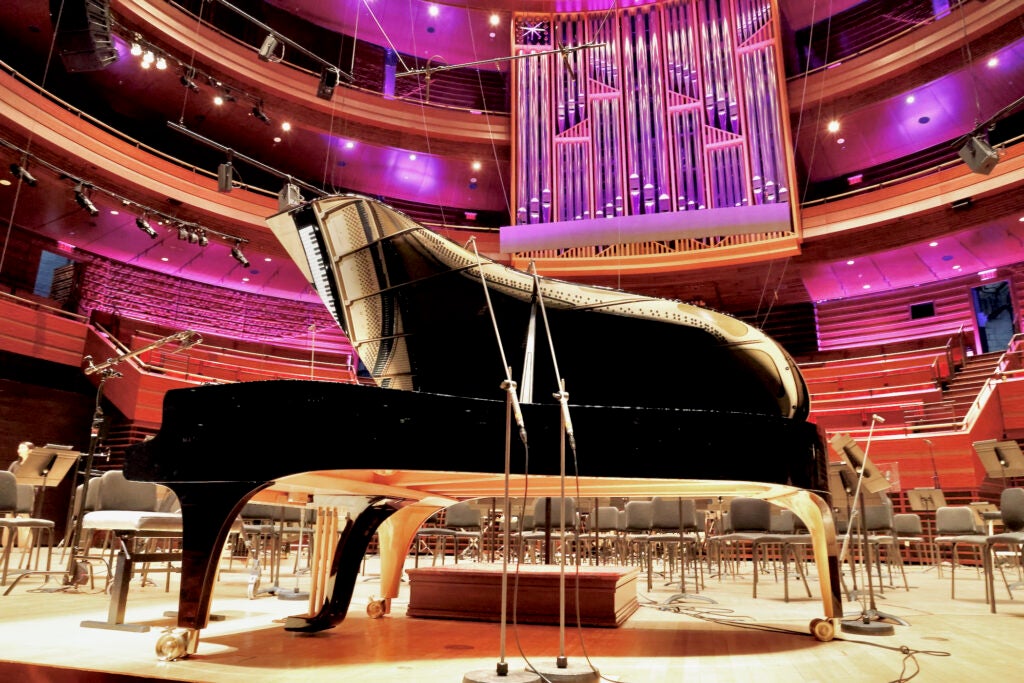
The piano has been played in concert before, at Carnegie Hall last November, but its home is in the Kimmel Center, where it has so far only been used off-stage for demonstrations. This weekend will be its Verizon Hall concert debut.
This will also mark Ax’s first time playing the curved piano on stage; he has only noodled with it before.
He said it does not feel very different, but it sounds different.
The piano is straight strung, meaning each string is parallel to the others. Because of the curved keyboard, the strings spread out as they run back, giving the piano a radiating shape.
Most concert grands are overstrung, meaning the bass strings are strung across the treble strings. It gives the strings a bit more resonance and the piano body its familiar shape.
“The sound is a little bit challenging for me because it apparently doesn’t carry quite as much as a Steinway,” Ax said. “I’m trying to make the best of it. It’s not a question of better or worse: It’s just very different.”
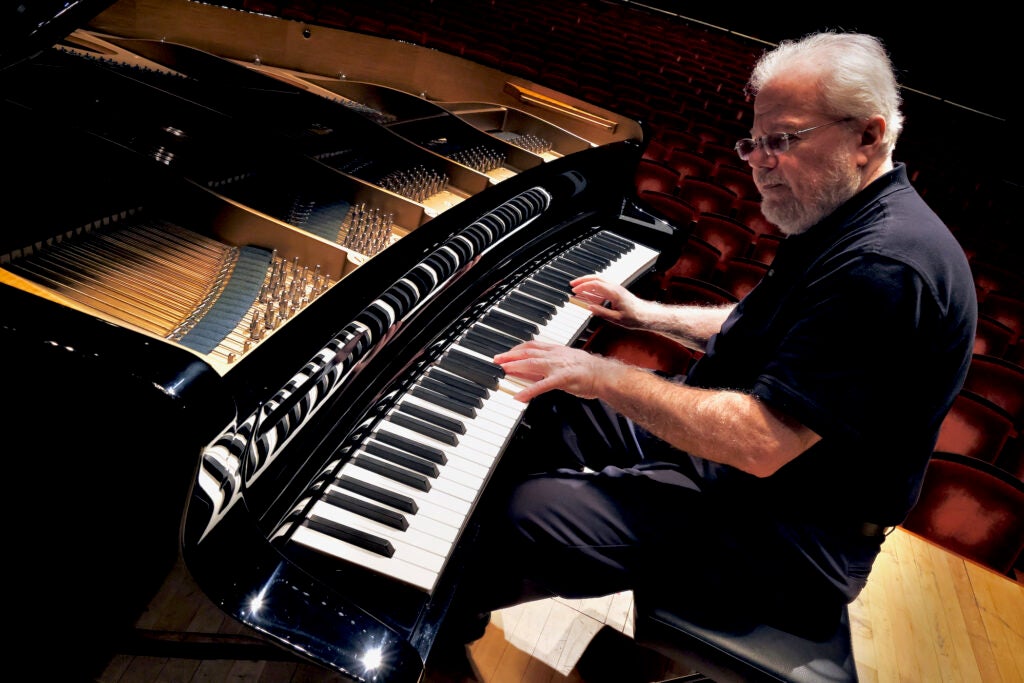
Ax is still on the fence if the curved keyboard is preferable to the straight one that he’s played the bulk of his life.
“It’s impossible to say because I’ve never thought there was an option,” he said. “You don’t think that way.”

Saturdays just got more interesting.
WHYY is your source for fact-based, in-depth journalism and information. As a nonprofit organization, we rely on financial support from readers like you. Please give today.



